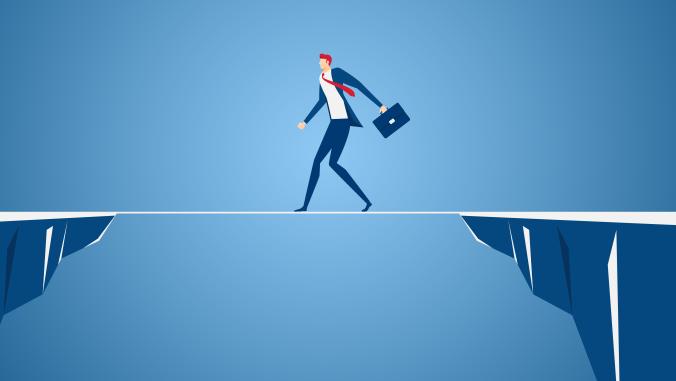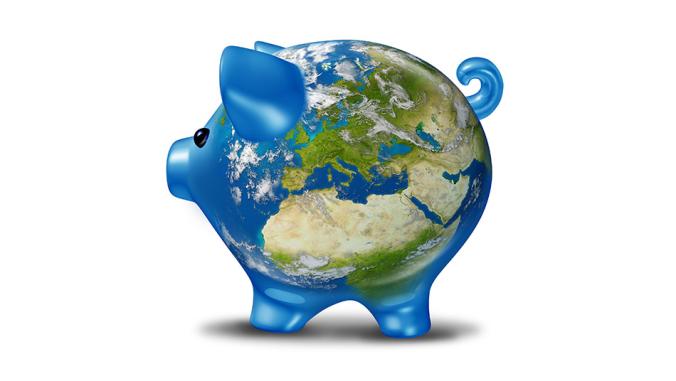Can we (should we) put a price tag on nature?
Are companies actually starting to base decisions on natural capital? From Coca-Cola to China, this report tracks the signs of change.

For businesses, natural capital has often been seen as the environmental economics equivalent of a free lunch.
Companies could use water or timber, or emit vast amounts of carbon with little recognition to the actual impacts or value it had on the natural world.
Yet, as any student of business or economics knows, there is no such thing as a free lunch. Meaning that as the impacts of climate change, severe droughts and ravishing natural disasters are being seen throughout the world, the value of nature’s finite resources will eventually be felt by businesses.
Although most businesses are still not adequately valuing their use of natural capital, the Natural Capital Project recently released a special feature entitled “Nature as Capital” on the current state of how different organizations—including businesses—“incorporate the value of nature in economic and social development plans.”
The feature comes 10 years after the UN’s Millennium Ecosystem Report Assessment, which involved 1,360 experts and scientists and “assessed the consequences of ecosystem change for human well-being." According to University of Minnesota economist Stephen Polasky, an editor of the report and co-founder of the Natural Capital Project, that's when “natural capital ecosystem services burst on the scene.”
Founded in 2006, the Natural Capital Project consists of members from the Stanford University’s Woods Institute for the Environment and the University of Minnesota, along with the Nature Conservancy and the WWF.
The mission of the organization is to “integrate the values of nature into all major decisions affecting the environment and human well-being,” according to its website.

The Nature as Capital feature was published in the Proceedings of the Natural Academy of Sciences, and highlights 12 different reports. The reports, in part, provide a snapshot of the current state of how far the world has come in valuing natural capital in past ten years.
When it comes to how businesses are valuing natural capital, Polasky sees rapid progress on two sides.
Polasky believes that the science behind natural capital has greatly improved and “there’s been a lot done to come up with the tools and metrics.” He also mentions that there has great progress in companies becoming more aware of the importance of natural capital.
However, Polasky adds, “The place where progress has been slow… is actually changing, or making, decisions based on natural capital information. That’s because in order to do that you really have to change not only mindset, but institutional incentive."
This problem may sound all too familiar to corporate sustainability advocates, as the question still remains—what is the best incentive to motivate companies to change?
Making the environment count
In his book, Natural Capital: Valuing the Planet, Dieter Helm, professor of energy policy at the University of Oxford, similarly argues that in order for the world—not just business—to recognize natural capital as a serious concern it must think about the environment as part of economics.
“By viewing the environment as made up of natural capital, it takes its place alongside man-made capital and human capital. It is integrated into the fabric of the economy not a second place add on,” writes Helm.
While few companies have yet to integrate natural capital into their business models, and there is still not a singular governing set of standards for valuing natural capital, some companies have taken the lead.
One example of a company that has incorporated natural capital into its decision making process is Coca-Cola, which has partnered with the Nature Conservancy since 2002 to enhance its sustainability efforts. The partnership has been trying to access Coca-Cola’s overall water footprint to determine how to best source its water.
The group has also tried to work together to meet Coca-Cola's ambitious goal of returning all of the water used in its products and operations to nature or the community by 2020.
“It’s a question of if we’re going to have these impacts where is the best place to have them, so that we have no impact on an array of things that people care about?” said Anne Guerry, Chief Strategy Officer and lead scientist of the Natural Capital Project.
However, to incentivize and motivate other companies to use natural capital in their decision-making processes, one may wonder whether simply having industry leaders is enough, or whether more regulatory pressure is needed.
“There certainly is room for regulation to be one of the incentivizes that can change corporate behavior,” said Guerry.
A surprise from China?
Although Stephen Polasky said he’s “not very optimistic” that the U.S. federal government will incentivize these changes to occur, he does proclaim optimism for China’s government—despite that nation not normally being associated with a clean environmental or sustainability record—to recognize the importance of natural capital.
One of the studies in the feature is about the “impacts of conservation and human development policy across stakeholders and scales.” The study highlights how the Chinese government is using zoning to protect 28 percent of the country’s natural capital assets.
According to the report, China is “paying 200 million people to perform restoration and conservation activities to achieve this dream and to secure human well-being.”
Among these payments to improve restoration and conservation also involve the Chinese government paying residents of the Ankang Municipality—within a highly mountainous area of northern China prone to natural disasters such as severe floods and earthquakes —to relocate, in part to mitigate erosion and preserve drinkable groundwater.
According to Polasky, after working with China’s Academy of Sciences, “they have realized that preserving ecosystems and natural capital is important and we’re going to take it as seriously as we’ve taken economic growth.”
Yet, whether or not governments are currently incentivizing companies to incorporate natural capital into their business models, Polasky is hopeful for the future.
“I am guardedly optimistic. I think that this is such an important area and it’s going to grow more important as we have climate change and potential drought situations and flooding,” said Polasky.
Dieter Helms also eloquently explains why natural capital is so essential to humanity.
“Access to, and the enjoyment of, natural capital is an integral part of what makes human life so good. We are ultimately the product of natural capital, and we are part of nature not separate from it,” writes Helm.





